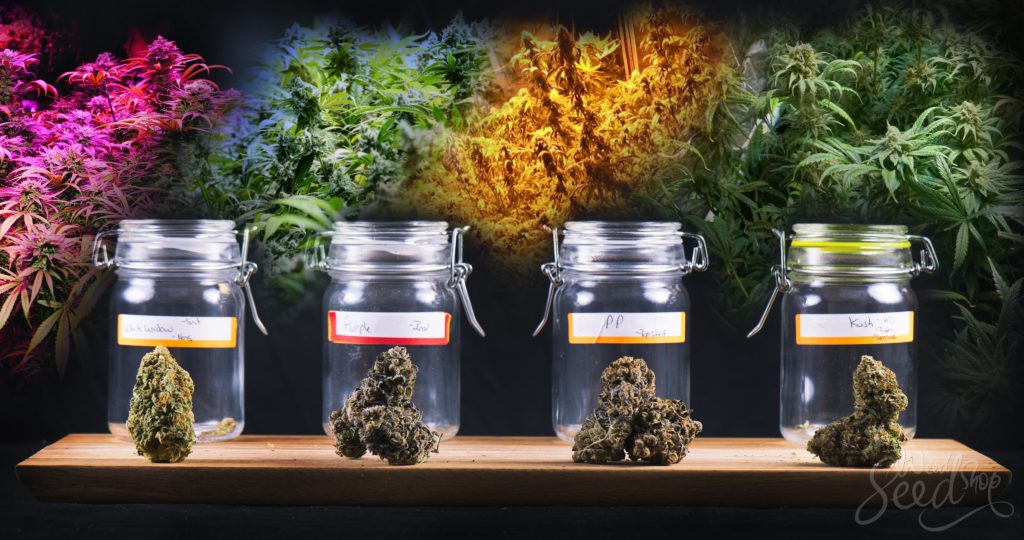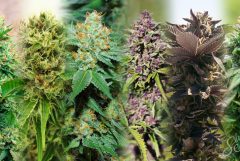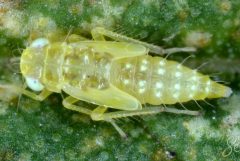It is one of the finer characteristics of cannabis that it is available in such a multitude of strains. We have adapted technologies that allow us to genetically alter cannabis to better suit our individual needs, and this is what gives us an amazing variety. Read this article to find out exactly what it is about strains that makes the cannabis experience different for each one.
One of the most beautiful things about weed is the variety of strains it is available in and the variety of different experiences those strains can induce. Modern technology means that strains can be genetically engineered now to contain carefully selected amounts of different cannabinoids and different terpenes. The range of uses that this means cannabis can be used for is huge. From medical cannabis to recreational cannabis, there is a strain to suit every need.
So what makes cannabis connoisseurs go “mmm”? What is it that makes all the different strains unique? The genotypes and phenotypes are what are responsible for all of the different colours, flavours, and smells of weed. The internal genetic material of a plant, combined with its environment, are what produce the final product that comes out. The long history of cannabis cultivation and hybridism in particular has meant an enormous genetic diversity within the world of weed.

Genotypes and Phenotypes
The physical expression of any plant, animal, or human being is always a product of both its genetic code and its environment. For example, a cannabis plant with the same genetic code grown in two environments could be two very different plants, although with the same genetics. This is because the environment will draw out a particular part of the genetic code, and it will be the unique expression of that.
The genotype is the genetic information that is living in the seed of the plant. This provides the basic foundation from which the plant will grow. It is the potential of all the possibilities the plant could be. It is from this information that the environment draws out the final product. The phenotype is the physical expression of the genotype, meaning that the phenotype is exactly what the environment draws from the genotype. These are the smells, tastes, and colours that manifest in the plant, for example. The phenotype also incorporates all of the physical attributes of it, such as its growth pattern, its look, and even whether it is healthy or sick. The two combined is what allows for the many different expressions of a cannabis strain, even if it has the same genetics but is grown in a different environment.
Early species of cannabis
The many different strains we have now are a result of the human intervention on cannabis. Before genetic experimentation and cultivation began, there were very early species of cannabis called land races. These are indigenous cannabis varieties which have adapted to their environment / geographic location, the very first strains, if you will. You could call these the ancestors of cannabis, and it has only been after many generations and many adaptations that we have reached the number of strains we have available today.
It is believed that these land race strains come from the Hindu Kush mountain range of Pakistan, which spread to more tropical parts of the world thereafter. Land race are those strains which humans took and began cultivating, and from there the big world of genetics opened up. Once humans became a part of the story of growing weed, all of the hybrid strains that are available on the market today came.
Indoor cultivation of weed
During the 1970s, arguably the beginning of the war on drugs, when the federal attitude towards cannabis policy became very punitive, enthusiasts were forced to begin growing their cannabis indoors. This meant that a lot of the diversity was lost during this time as growers made the switch to attempting to grow in soil beds under LED lights or in hydroponic systems, for example.
This did, on the other hand, give a lot of power to the grower to manipulate the phenotypic expression of the plant. For example, even differently angled light can affect the final result. There are certain characteristics of a strain that can be drawn out simply by manipulating the environment in which it is growing, and this means we see many different variables in the phenotype. However, many growers will agree that the best plants grow outdoors, as the indoor environment limits the potential of what the plant could express in nature.

What hybrids did for diversity
Growing cannabis indoors and having so much control over the environment of the plant eventually led to growers exploring genetic hybridism. When growers began crossing sativas with indicas, all of the different strains became available to us. And with the range available to further cross, the potential for more is infinite. There are qualities on the two different main types of cannabis that growers were looking to get the best out of. The result of genetic hybridism was the best of both worlds.
It seems now that every different strain has a different aroma, a different taste, and a completely different look. Some buds are thick and covered in resin, whereas others are smaller and leafier. Some produce an incredible cerebral high, whereas others are experienced more in the body. The wide range of different tastes, smells, aesthetics, and effects come from the variety that occurred as a result of hybridism. This resulted in the many plants that have the growth patterns of an indica but the soaring effects of a sativa strain.
Until now, most growers have been more interested in raising the THC content of weed, but more recently the field of genetics has been interested in high-CBD strains for its medicinal value. The future of genetics lies in the ability to choose your mood with weed by selecting strains on one of their components called terpenes (in part responsible for the smell). The potential is infinite when it comes to genetic engineering with weed because of the variety we have been able to create.
In fact, human beings have been the reason for the expression of the many different strains of cannabis. It is through human experimentation that there has been the possibility for all of the different phenotypes we see and experience today. There’s really no knowing how far geneticists of cannabis will take this and what potentials we will be confronted with in the future.









